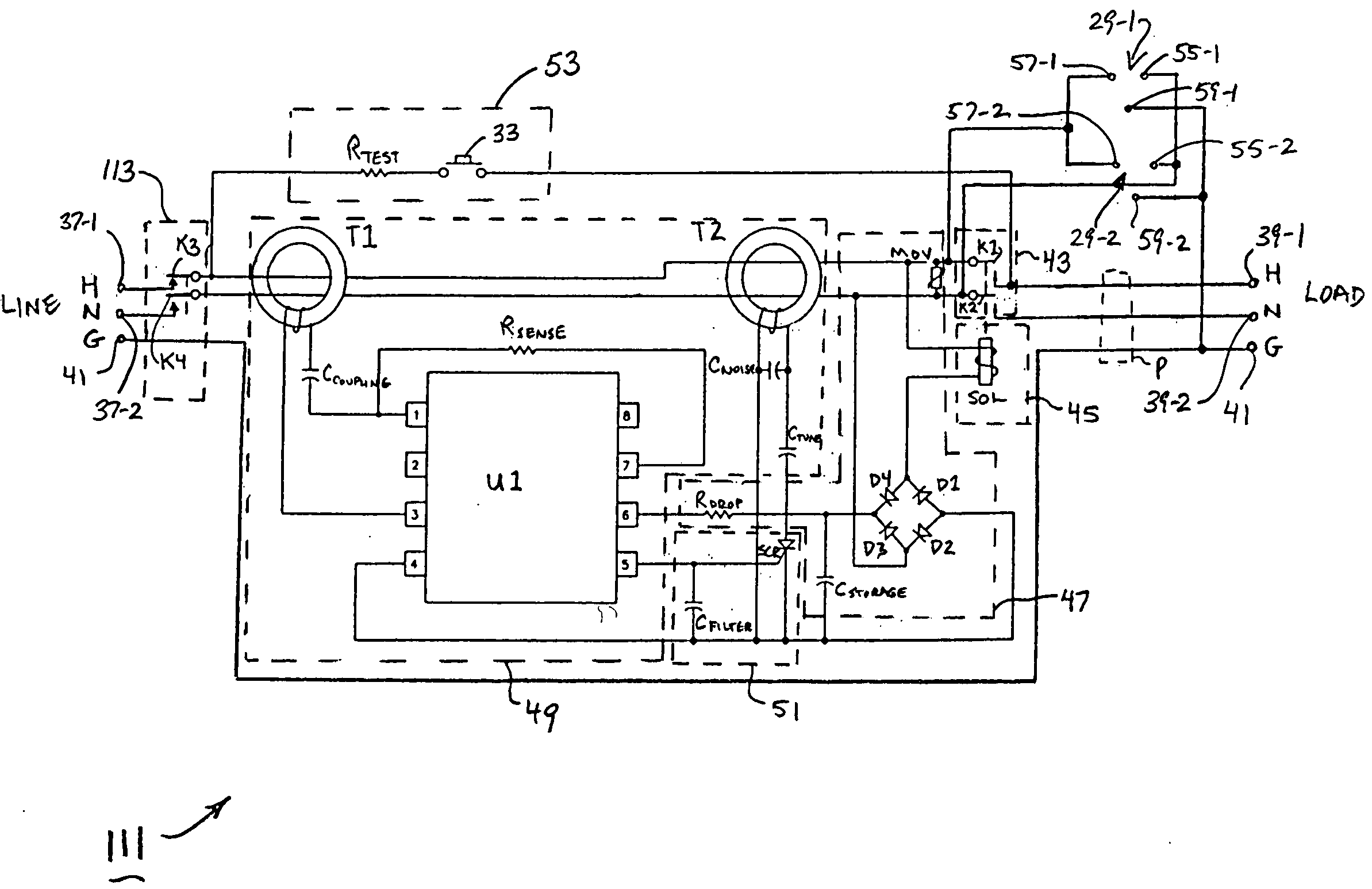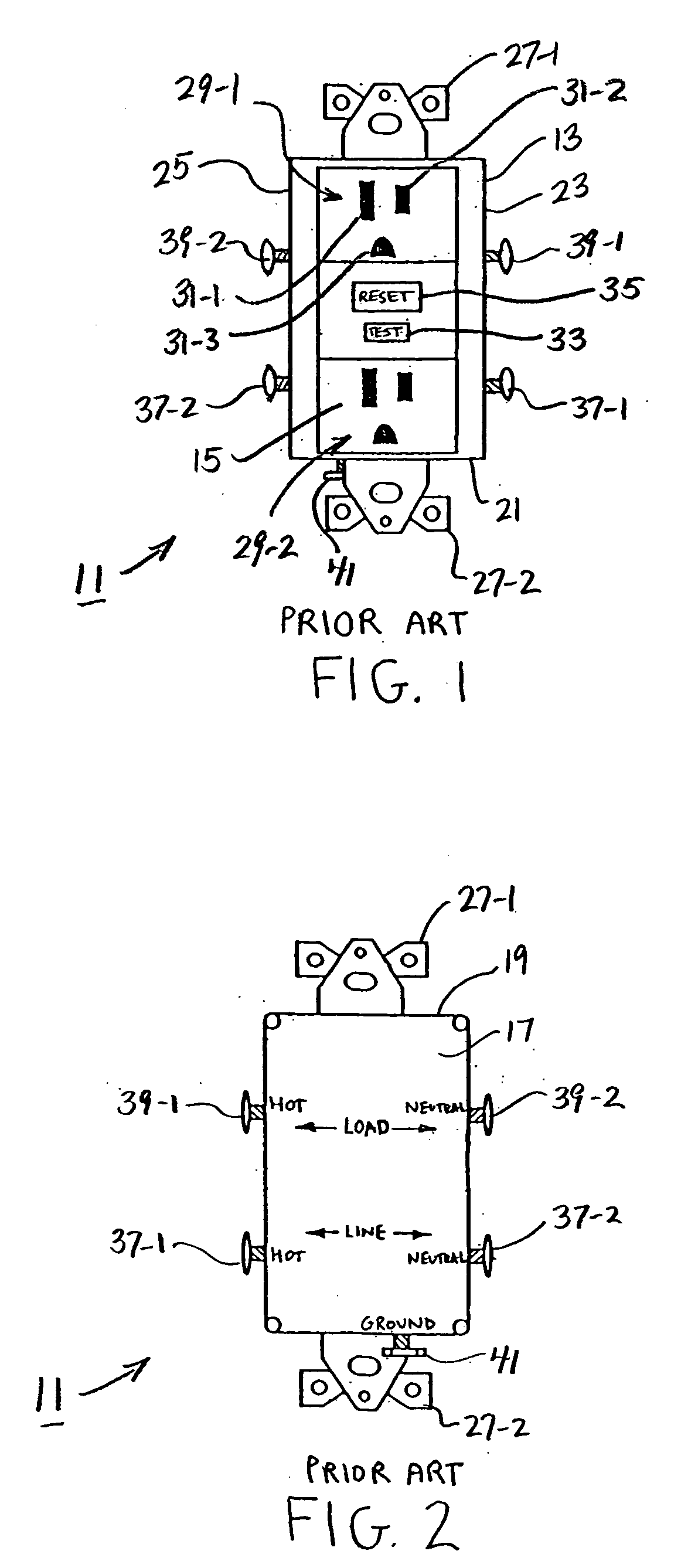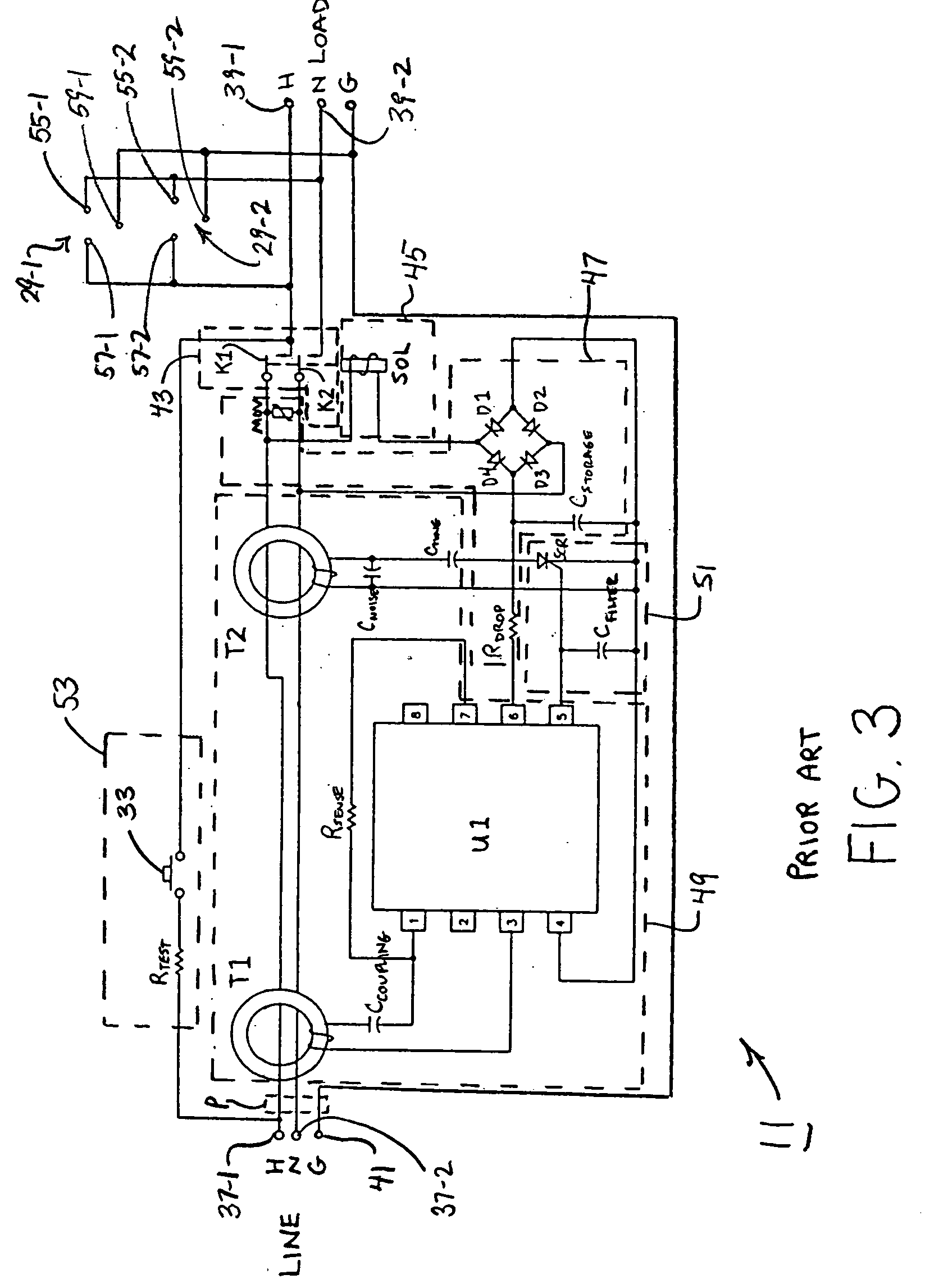Ground fault circuit interrupter
- Summary
- Abstract
- Description
- Claims
- Application Information
AI Technical Summary
Benefits of technology
Problems solved by technology
Method used
Image
Examples
first embodiment
[0060] Accordingly, referring now to FIG. 4, there is shown a ground fault circuit interrupter (GFCI) which is constructed according to the teachings of the present invention, the GFCI being identified generally by reference numeral 111. As will be described further below, GFCI 111 differs from prior art GFCI 11 in that GFCI 111 provides ground fault protection to outlets 29 in two directions (i.e., in either direction between terminals 37 and 39) whereas prior art GFCI 11 provides ground fault protection to outlets 29 in only one direction (i.e., in the direction from terminals 37 to terminals 39).
[0061] GFCI 111 is identical in all respects with GFCI 11 with two notable distinctions.
[0062] As a first notable distinction of GFCI 111 in view of GFCI 11, it should be noted that GFCI 111 includes a second circuit breaker 113 for controlling the delivery of power along conductive lines H and N from the power source to the load. Circuit breaker 113 includes a pair of normally closed, s...
second embodiment
[0067] Referring now to FIG. 5, there is shown a ground fault circuit interrupter (GFCI) which is constructed according to the teachings of the present invention, the GFCI being identified generally by reference numeral 211. As will be described further below, GFCI 211 differs from prior art GFCI 11 in that GFCI 211 provides ground fault protection to outlets 29 in two directions (i.e., in either direction between terminals 37 and 39) whereas prior art GFCI 11 provides ground fault protection to outlets 29 in only one direction (i.e., in the direction from terminals 37 to terminals 39).
[0068] GFCI 211 is identical in all respects with GFCI 11 with two notable distinctions.
[0069] As a first notable distinction of GFCI 211 in view of GFCI 11, it should be noted that outlets 29 in GFCI 211 are connected to conductive lines H and N of the power cord at a location between circuit breaker 43 and line side terminals 37 (whereas outlets 29 in GFCI 11 are connected to conductive lines H and...
third embodiment
[0074] Referring now to FIG. 6, there is shown a ground fault circuit interrupter (GFCI) which is constructed according to the teachings of the present invention, the GFCI being identified generally by reference numeral 311. As can be appreciated, GFCI 311 operates in a similar manner as GFCI 211. As such, it is to be understood that GFCI 311 functions by (1) providing ground fault protection to outlets 29 when the power source and load are connected to GFCI 311 in a proper manner and (2) maintaining GFCI 311 in a tripped condition (i.e., suspending the application of power from the line to the load and outlets 29) when the power source and load are connected to GFCI 311 in the reverse order.
[0075] The sole distinction between GFCI 311 and GFCI 211 relates to the fact that GFCI 311 includes a reverse wiring circuit 313 which differs slightly in construction from reverse wiring circuit 213 in GFCI 211. Specifically, reverse wiring circuit 313 is similar to reverse wiring circuit 213 ...
PUM
 Login to View More
Login to View More Abstract
Description
Claims
Application Information
 Login to View More
Login to View More - R&D
- Intellectual Property
- Life Sciences
- Materials
- Tech Scout
- Unparalleled Data Quality
- Higher Quality Content
- 60% Fewer Hallucinations
Browse by: Latest US Patents, China's latest patents, Technical Efficacy Thesaurus, Application Domain, Technology Topic, Popular Technical Reports.
© 2025 PatSnap. All rights reserved.Legal|Privacy policy|Modern Slavery Act Transparency Statement|Sitemap|About US| Contact US: help@patsnap.com



